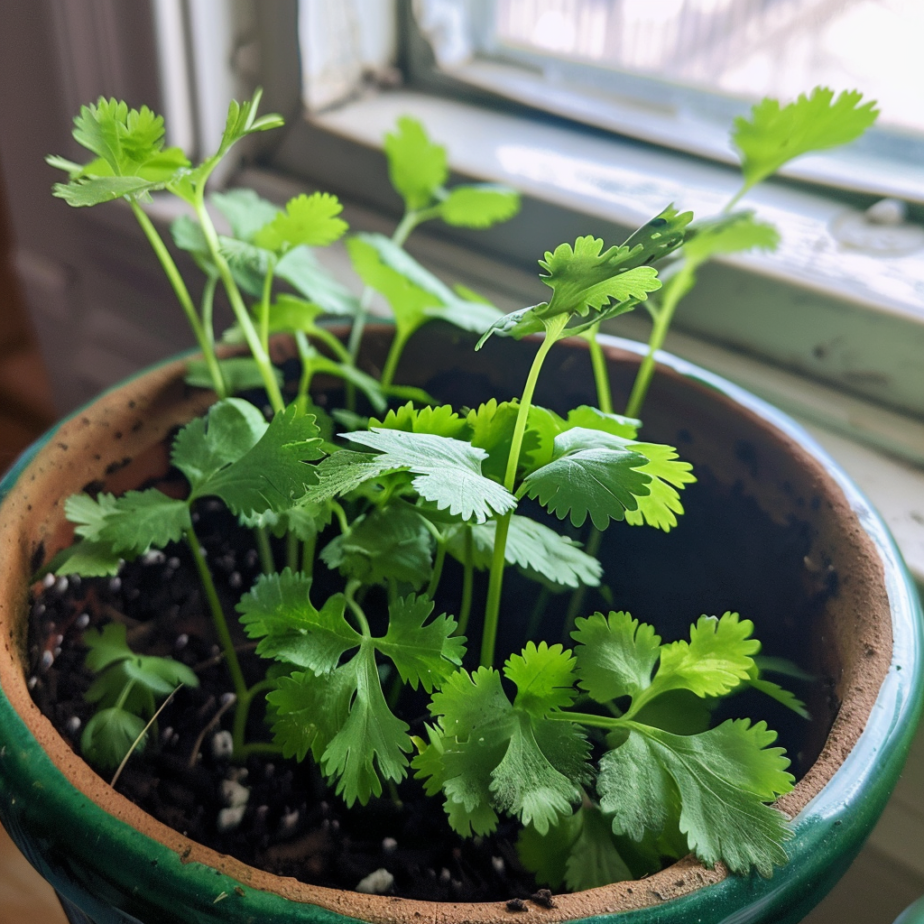Ah, cilantro! Some folks can’t get enough of it, while others—well, let’s just say they’re not its biggest fans. But if you’re in the camp that loves adding a fresh zing to dishes with this fragrant herb, why not grow it yourself? And guess what? You don’t need a sprawling garden to do it. Growing cilantro in pots is as easy as pie, and I’m here to walk you through every step of the way. So, roll up your sleeves, and let’s dive in!

Step 1: Choosing Your Champion – The Right Pot
First things first, picking the right pot is crucial. Cilantro loves a little room to stretch its roots, so opt for a pot that’s about 8 to 10 inches deep. Make sure it’s got drainage holes at the bottom because soggy soil is pretty much a no-go for cilantro. Trust me, you don’t want to drown those precious greens.
Step 2: Location, Location, Location
Now, where to place your cilantro pot? This herb is like Goldilocks; it likes conditions that are just right—not too hot, not too cold. A spot that gets a mix of sun and shade throughout the day is perfect. If you’re dealing with a scorcher of a summer, a bit more shade will help keep your cilantro from bolting (that’s when it goes to seed too quickly, and trust me, you don’t want that).
Step 3: The Dirt on Soil
Alright, let’s talk dirt. Cilantro isn’t too picky, but it does best in well-draining soil. Mix some compost or a slow-release fertilizer into your potting mix to give your cilantro a boost. This will keep it happy and healthy, leading to a bountiful harvest.
Step 4: Sowing the Seeds of Success
Cilantro seeds, also known as coriander seeds, are unique. They’re actually two seeds encased in a husk. Gently crush the husk before planting to encourage germination but don’t go Hulk on them; a gentle touch is all you need. Scatter the seeds on top of the soil and cover them lightly with more soil. Keep the soil moist (not drenched) until the seeds germinate, which should take about 7 to 10 days.
Step 5: Water Wisely
Once your cilantro starts growing, watering becomes a balancing act. You want to keep the soil moist but never waterlogged. A good rule of thumb is to water when the top inch of soil feels dry to the touch. Early morning is the best time to water, giving the plant a chance to soak up the moisture before the heat of the day.
Step 6: A Little Snip-Snip
As your cilantro grows, it’ll get bushier and start to reach for the sky. Once it’s about 6 inches tall, you can start harvesting. Don’t be shy; clipping those leaves encourages more growth. Just make sure not to take more than a third of the plant at a time. And hey, the more you snip, the more you get, so keep those scissors handy!
Step 7: Keeping Trouble at Bay
Keep an eye out for common pests like aphids and fungal diseases. A blast of water or an application of neem oil can help keep pests in check, while ensuring good air circulation around your plants can prevent most fungal issues.
The Final Word
Growing cilantro in pots is a fantastic way to have fresh, flavorful herbs at your fingertips. Whether you’re garnishing a dish or whipping up a batch of homemade salsa, nothing beats the taste of cilantro you’ve grown yourself. Plus, it’s a fun and rewarding project that even those without a green thumb can enjoy. So why wait? Get potting and enjoy the fresh, zesty flavors of home-grown cilantro in no time!

